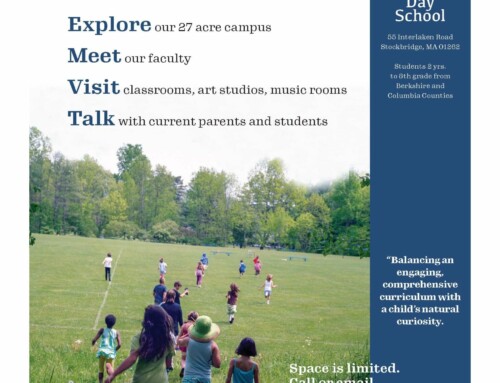After a humid summer and a mild September, autumn has arrived. Crisp air, colorful foliage and brisk breezes animate our beautiful campus. The stream runs swiftly down from the ridge, passing behind Peterson and Peseckis Halls.
Walking toward the Learning Commons before school one day earlier this month, I called enthusiastically to a very young student across the lawn, “Good morning!” Quickly came the reply, “Be quiet!”
“Be quiet?” I answered, somewhat querulously. “Yes!” came the insistent reply. And then more softly, “Yes; listen, you can hear the river!”
And so I stopped, and quieted, and we listened together to the rush of water in the stillness. How fortunate we adults are to be reminded by children to savor a moment, to take our time, to recognize the wonder of the world around us. Such opportunities abound here at the Brook Farm campus, whether on the trails above the playing fields, around the pond or in the garden plantings that line the courtyard walls.
The first six weeks of school have been inspiring to me, filled with examples of fine teaching, powerful curriculum, and engaged and happy students. It is a privilege to be part of this school community, helping to navigate BCD through a year of transition. I look forward to more of these encounters, to working with colleagues, parents, trustees, alumni and friends of the School to sustain its outstanding programs and prepare for new leadership next year.
Schools for young children and adolescents are remarkably complex enterprises, filled with dynamic relationships, daily growth, and occasional regression, unexpected moments of inspiration, doubt, and delight. We teachers and parents, seeking to do our utmost for each student in each of these moments, sometimes inadvertently achieve the opposite. It was a Tennessee psychologist who first pointed out for me that when we set high expectations, as we can create a hypersensitivity to perceived failure, particularly when our definition of success is too narrow. We risk focusing more on how to develop children and less on how children develop. And our sense (as parents or as professionals) that what we do “is never enough” can be contagiously dispiriting, influencing young people in ways we never intended.
Two innovative projects on opposite coasts are developing programs aimed at rebalancing the equation of what matters most in education. They examine how schools and families can work effectively together. Challenge Success at Stanford, and Making Caring Common at Harvard, are working in interesting ways toward overlapping aims. They remind us of our hopes that more should come from education than individual achievement or competitive advantage. An early morning moment can have this effect as well, reminding us that reflective habits of mind have great value, along with generative thinking and disciplined inquiry and analytic exercise. At a time of mounting rancor and recrimination in American culture, a small sanctuary of a school can offer a countering opportunity, a precious chance to learn how to listen, together.
Cordially,
Mark
Mark W. Segar, Ed.D.
Interim Head of School

